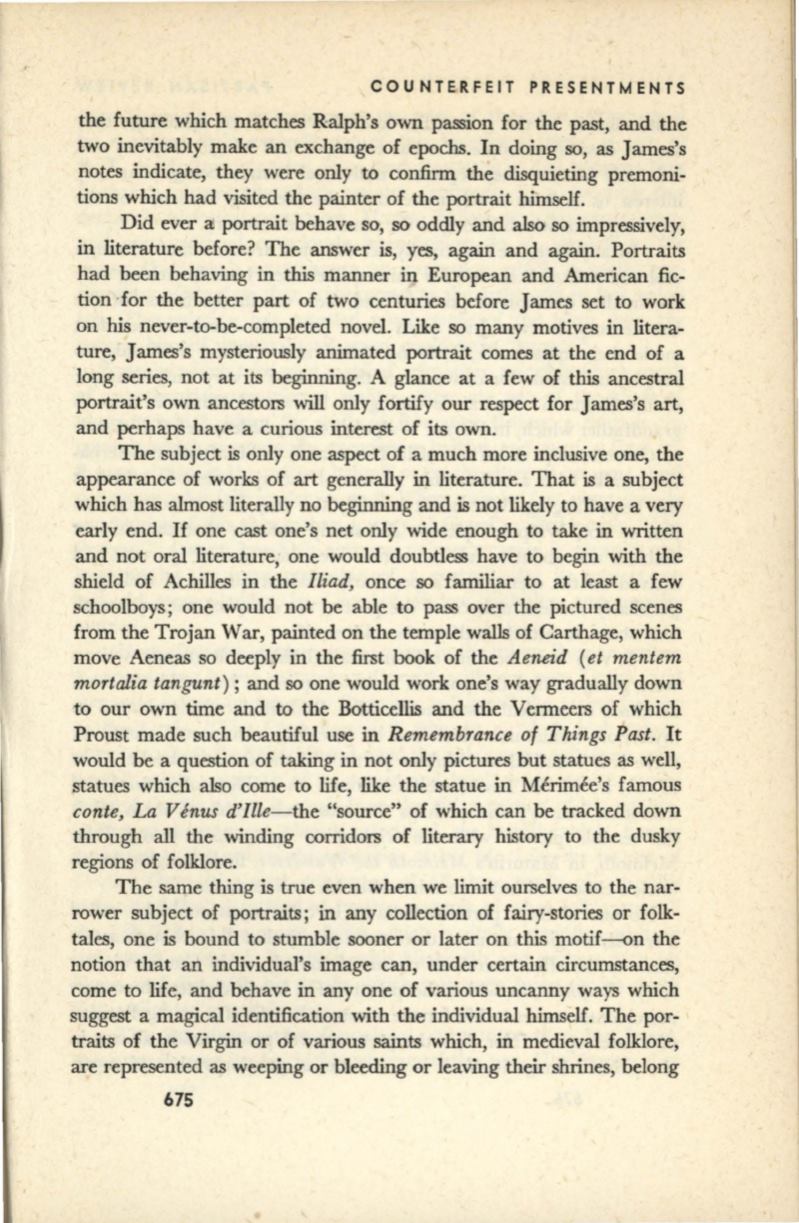
COUNTERFEIT PRESENTMENTS
the future which matches R:alph's own passion for the past, and the
two inevitably make an exchange of epochs. In doing so, as James's
notes indicate, they were only
to
confirm the disquieting premoni–
tions which had visited the painter of the portrait himself.
Did ever
al
portrait behave so, so oddly and
also
so impressively,
in literature before? The answer is, yes, again and again. Portraits
had been behaving in this manner in European and American fic–
tion ·for the better part of two centuries before James set to work
on his never-to-be-completed novel. Like so many motives in litera–
ture, James's mysteriously animated portrait comes at the end of a
long series, not at its beginning. A glance at a few of this ancestral
portrait's own ancestors
will
only fortify our respect for James's art,
and perhaps have a curious interest of its own.
The subject is only one aspect of a much more inclusive one, the
appearance of works of
art
generally in literature. That is a subject
which has almost literally no beginning and is not likely to have a very
early end.
If
one cast one's net only wide enough to take in written
and not oral literature, one would doubtless have to begin with the
shield of Achilles in the
Iliad,
once so familiar to at least a few
schoolboys; one would not be able to pass over the pictured scenes
from the Trojan War, painted on the temple walls of Carthage, which
move Aeneas so deeply in the first book of the
Aeneid
(
et mentem
mortalia tangunt)
;
and so one would work one's way gradually down
to our own time and to the Botticellis and the Vermeers of which
Proust made such beautiful use in
Remembrance of Things Past.
It
would be a question of taking in not only pictures but statues as well,
statues which also come to life, like the statue in Merimee's famous
conte, La Venus d'Ille-the
"source" of which can be tracked down
through all the winding corridors of literary history to the dusky
regions of folklore.
The same thing is true even when we limit ourselves to the nar–
rower subject of portraits;
in
any collection of fairy-stories or folk–
tales, one is bound to stumble sooner or later on this motif--on the
notion that an individual's image can, under certain circumstances,
come to life, and behave in any one of various uncanny ways which
suggest a magical identification with the individual himself. The por–
traits of the Virgin or of various saints which, in medieval folklore,
are represented as weeping or bleeding or leaving their shrines, belong
675


